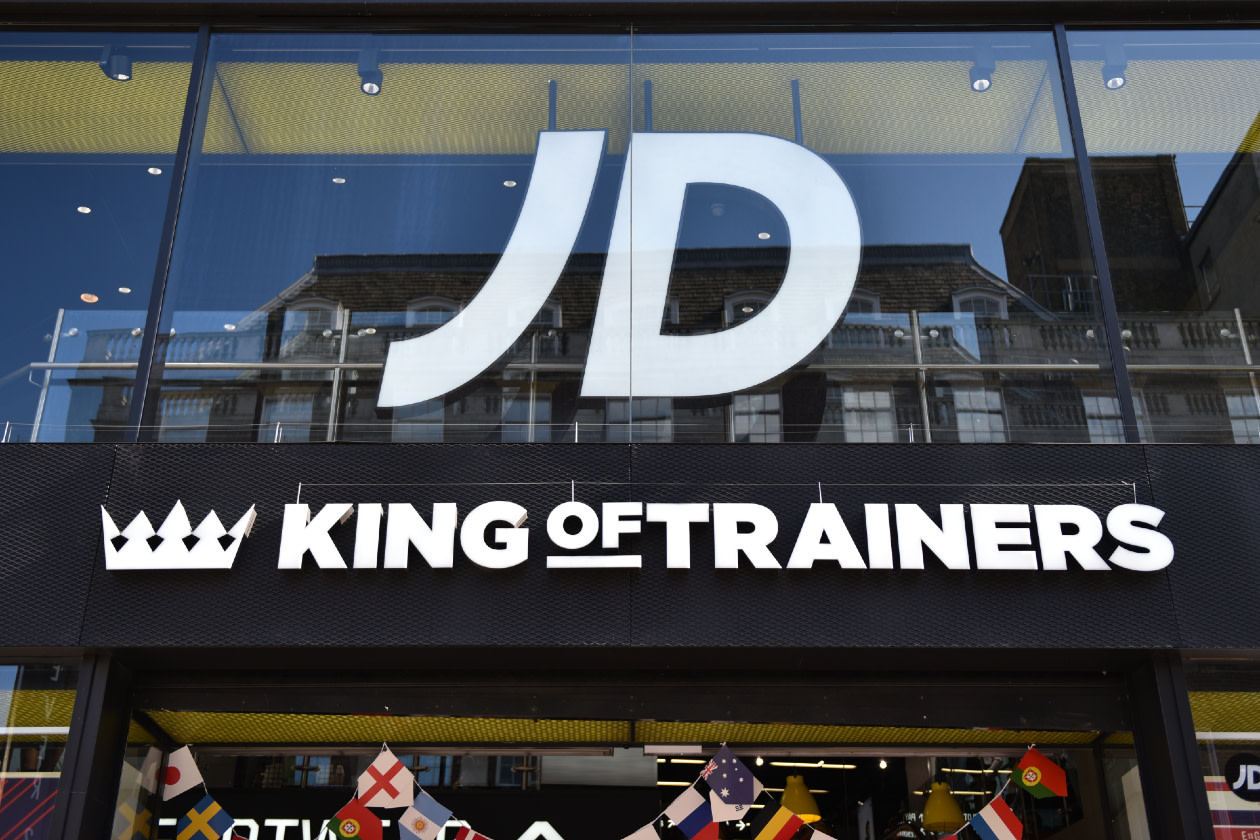JD Sports' fourth-quarter like-for-like sales grew 0.1%, largely as a result of sales growth in Asia Pacific and North American regions offsetting weak UK and ROI performance. This meant that full-year sales finished the year 4.2% higher at £10.5bn.
Gross margins ended the year at 47.3%, down 0.5 percentage points from the previous year, driven by higher levels of discounting. 215 new JD stores were opened in the year.
Full-year underlying profit before tax guidance is expected to land between £915-935mn, in line with recently lowered guidance.
Underlying profit before tax guidance for 2025 is expected to be in the range of £900-980mn. Trading in the first 7 weeks of the year has been in line with group expectations.
The shares rose 7.4% following the announcement.
Our view
Sports fashion retailer JD Sports is still weathering a storm. The full-year trading update suggests it’s not out of the woods yet and it will have to wait a little longer for consumer sentiment to improve.
Slow demand led to a worse-than-expected festive trading period, as increased amounts of discounting to shift inventory hurt profitability. That meant that back in January, JD reduced full-year profit guidance by around 10%, triggering a 23% drop in the valuation on the day.
As a fashion retailer, JD Sports operates in the corner of the retail sector that we think is most exposed to an economic downturn. When conditions deteriorate and money gets tight people think twice about buying the latest trainers.
This has meant conditions have been tough, but we think external factors have been mostly to blame. It still has excellent market share and is continuing to grow. The global sports apparel market is huge – valued at $196bn in 2022 and expected to grow to $272bn by 2030. To service all this demand, JD’s rolled out stores all over the world, with 215 more opened last year.
Filling the racks in these stores are exclusive items from the likes of Nike and Adidas. JD is known for its strong brand relationships and is even Nike’s single largest partner globally. Being able to offer these ‘JD Exclusives’ helps to lure customers into stores and boost market share.
The group’s sales mix by region is also better balanced than some of its biggest competitors, which helps smooth out bumps in the road if one market slows. With UK and ROI sales being disappointing in the fourth quarter, this diversity has contributed to keeping growth alive. And because the group sits at the premium end of the market, it typically has healthier margins than its peers too.
But JD Sports faces challenges. Estimates suggest Nike sales contribute to 50-55% of JD’s sales globally, which creates dependency. To gear up for long-term growth, Nike plans to intentionally reduce the supply of older but still popular product lines, in hopes it will stimulate demand for newer releases. This should create some much-needed excitement, but the cost of potential supply reductions to wholesale partners like JD remains to be seen.
The group had a net cash position of just over £1.0bn at the start of 2024, roughly 18% of the group’s total valuation. This is a huge cash buffer that offers levers to pull to access growth and help cushion potential turbulence in the near term.
The company’s valued at 8.8 times forward earnings, significantly below its long-run average. This reflects the uncertainty surrounding the retail sector in the near term and recent disappointments. But in the long term, we think the extremity of January repricing provides an attractive valuation for a company which has strong revenue and profit growth prospects.
JD Sports key facts
All ratios are sourced from Refinitiv, based on previous day’s closing values. Please remember yields are variable and not a reliable indicator of future income. Keep in mind key figures shouldn’t be looked at on their own – it’s important to understand the big picture.
This article is not advice or a recommendation to buy, sell or hold any investment.No view is given on the present or future value or price of any investment, and investors should form their own view on any proposed investment.This article has not been prepared in accordance with legal requirements designed to promote the independence of investment research and is considered a marketing communication.Non - independent research is not subject to FCA rules prohibiting dealing ahead of research, however HL has put controls in place(including dealing restrictions, physical and information barriers) to manage potential conflicts of interest presented by such dealing.Please see our full non - independent research disclosure for more information.


